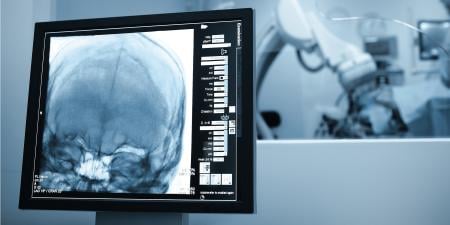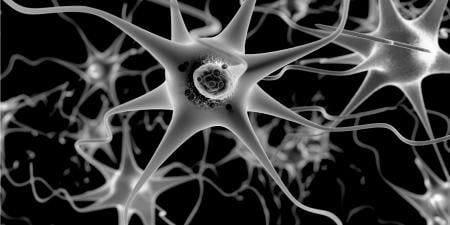Introduction
Neuromodulation is a branch of functional neurosurgery that aims to treat chronic neurological or psychiatric diseases by surgically targeting deep brain nuclei and pathways involved in the mediation of the symptoms in order to stimulate, inhibit, or otherwise modify, i.e., modulate, pathological activity.
In recent years, the increasing adoption of neuromodulation therapy has led to a general perception that the technique is safe. This has emboldened proponents of its experimental use in a variety of conditions not traditionally under the purview of neurosurgery, including, on a theoretical basis, the enhancement of normal function and capabilities. With a view to the history of neuromodulation ethics and the current state of our knowledge regarding its long-term use, this is an improper application that neglects serious risks and endangers the patients who would otherwise benefit from this technology.
The modern era of neuromodulation started with the publication in 1987 of a paper by Benabid et al. on the use of deep brain stimulation (DBS) for suppressing tremors of Parkinson disease [1], and the field is still dominated by deep brain stimulation (DBS). Thanks to modern imaging, including functional imaging, and improved surgical techniques, neurosurgeons are now able to implant DBS electrodes virtually anywhere in the brain with a high degree of accuracy and relative safety. Increased understanding of the neural circuits involved in various neurological, psychiatric, cognitive, and behavioral disorders makes it tempting to use the nondestructive stereotactic technique of DBS to modulate these circuits in the hope of alleviating symptoms. The success of this approach on the motor symptoms of Parkinson disease (the most common indication for DBS) has led to enthusiasm for applying DBS beyond movement disorders, in the realm of psychiatry, behavior, and cognition.
To date, DBS trials have targeted no fewer than 40 different brain sites for at least 30 clinical indications [2]. The common denominator of these investigational applications of DBS is their intention to treat symptoms of illnesses and diseases that are refractory to nonsurgical management, be they tinnitus or obesity, depression or dementia, epileptic seizures or phantom pain.
The general euphoria surrounding the potential of the technique of neuromodulation can arouse fears of a “slippery slope” in its future use for enhancement of normal functions or for “indications” beyond disease and illness. The ethics of neuromodulation use in psychiatric and behavioral illnesses is much debated today and the debate now stretches to address potential DBS applications beyond pathology. This paper will review the current ethical issues surrounding DBS and neuromodulation and their evolution, with emphasis on the role that the neurosurgeon should take in relation to trends and possible future uses, keeping in mind his or her role as the final executor of the surgical act, and thus, the one who will have to take full responsibility for its consequences.
Survey of Publications on Ethics of DBS
If 1987 marks the birth of the modern era of DBS use in movement disorders [1], 1999 is the dawn of the modern era of DBS in psychiatry. Indeed, it was the paper by Veerle Vandewalle et al. on DBS for Tourette syndrome published in The Lancet in February 1999 [3] and the publication of Nuttin et al. on DBS for obsessive compulsive disorder, also in The Lancet in October 1999 [4], that ushered in the current era of DBS in psychiatry. These were clinical discussions, though, so when and how, given the global spread of DBS, did discourse on the ethics of using chronically implanted electrodes in deep brain structures to modulate brain circuitries in various diseases arise?
A search of PubMed using the words “deep brain stimulation” and “ethics” provided 148 publications. The oldest paper listed is “Indications and Ethical Considerations of Deep Brain Stimulation” authored by three neurosurgeons and published in 1980 [5], seven years before Benabid et al. published their clinical introduction to DBS. This article by Siegfried et al. is a discussion of the use of DBS exclusively for pain control. Thus, the ethical concerns of the authors are chiefly clinical—might DBS cause brain tissue damage or biochemical modifications? Will the implanted electrodes move? Is the treatment clinically effective?
The next paper on the PubMed list was published in 2000 by ethicist Joseph Fins, who proposed an ethical framework for use of DBS in impaired consciousness, specifically from traumatic brain injury [6]. Fins advocated that investigation of the procedure go forward only in the presence of therapeutic intent—to benefit the participant—and if benefits were proportional to foreseeable risks [7]. Notably, Fins’s paper referred to the use of DBS to improve impaired consciousness as “interventional cognitive neuroscience.” In 2003, the first paper explicitly discussing the ethics of neuromodulation in psychiatric illness, also by Fins, appeared [8]. Hence, it was only after modern DBS progressed from neurology and movement disorders toward psychiatry in 1999 that nonclinical ethics became a matter of concern. The implication is that, between 1987 and 1999, when modern DBS was used only for Parkinson, tremor, and dystonia, there did not seem to be any ethical considerations worth discussing and publishing.
In 2006, Fins et al. published a paper on the ethics of DBS in psychiatry that explicitly mentions the role of the neurosurgeon [9]. Here, the authors discussed the era of unrestrained lobotomies, reminded the reader of the “abuses of that early era” [10], and stated, with respect to psychiatric DBS, that “it is ethically untenable for this work to proceed by neurosurgeons in isolation without psychiatrists determining the diagnosis and suitability of patients for treatment” [10]. The “abuses of that earlier era” allude mainly to the unrestricted lobotomies practiced by neurologist Walter Freeman, whose neurosurgeon James Watts abandoned Freeman because of his too liberal uses of lobotomy [11]. It is obvious that the legacy of the Freeman era of mass lobotomies still haunts the practice of surgery for psychiatric illness to this very day, be it stereotactic lesions (capsulotomy, cingulotomy) or DBS.
Fins et al. are rightly adamant that a multidisciplinary team of neurosurgeon(s), neurologist(s), psychiatrist(s), and psychologist(s) is required in any decision on DBS for psychiatric indications. Yet, the September 2009 issue of the Archives of General Psychiatry featured an article titled “Scientific and Ethical Issues Related to Deep Brain Stimulation for Disorders of Mood, Behavior, and Thoughts” [12]. This article summarized a two-day conference convened to examine scientific and ethical issues in the application of DBS in psychiatry, the aims of which were to “establish consensus among participants about the design of future clinical trials of deep brain stimulation for disorders of mood, behavior, and thought” and to “develop standards for the protection of human subjects participating in such studies” [13]. Sadly, none of the 30 participants at the meeting, 19 of whom are authors of the article, was a neurosurgeon. This rather undermines the call to a multidisciplinary approach to psychiatric surgery.
Concerning ethical guidelines for DBS in psychiatric indications, PubMed yields more than 25 papers with overlapping and repeated advice and suggestions for proper conduct. The latest published paper on this issue, the initiative behind which was taken by a group of neurosurgeons from the World Society for Stereotactic and Functional Neurosurgery (WSSFN), is entitled “Consensus on Guidelines for Stereotactic Neurosurgery for Psychiatric Disorders” [14]. This paper was authored by a worldwide group of neurosurgeons, psychiatrists, neurologists, and ethicists as well as representatives of various national, regional, and international neurosurgical and psychiatric societies. The paper highlights that DBS for psychiatric illness remains experimental and should be conducted in a multidisciplinary fashion, on patients with documented refractory illnesses who have the capacity to consent, with long-term follow-up using established evaluation scales, and with dissemination of all results, both positive and negative. This latest published consensus statement explicitly states that “neurosurgery for psychiatric disorders should never be performed for political, law enforcement or social purposes, but with therapeutic intent aimed at the restoration of normal function and amelioration of distress and suffering” [15].
DBS for Antisocial Behavior and Morality?
In July 2012, an article entitled “Functional and Clinical Neuroanatomy of Morality” was published in Brain [16]. The authors, who are neuroscientists at the University of Milano in Italy, wrote that “understanding the dysfunctional brain structures underlying abnormal moral behavior can lead to specific treatments nowadays using deep brain stimulation or other new non-invasive neuromodulation techniques” and suggested that “deep brain stimulation might be used in…pathological antisocial behavior or violence…and for shaping individual morality” [17]. The idea of using of DBS for such “indications” may well provoke a sense of déjà vu for those who remember the premodern era of DBS (or “psychosurgery”) of the 1960s and early 1970s, when the procedure was suggested for improving social behavior [18] and misused in questionable experiments on humans [19]. Indeed, the DBS practices of that period were subsequently condemned as “dubious and precarious [even] by yesterday’s standards” [20].
DBS for Enhancement of “Normal” Cognitive Function?
Many perceive DBS as reversible and almost harmless, disregarding the inherent risks of hemorrhage and neurological deficit and the many side effects of chronic stimulation of various deep brain structures [12]. Notwithstanding the fact that no neuromodulation procedure is as yet “established” as a treatment for any of the multitude of brain targets involved in any psychiatric or behavioral illness (despite 15 years of intense activity in the field [21]), discussion of DBS as a surgical method has undergone a potentially alarming jump: it is being considered for future cognitive enhancement of healthy people. In a survey of North American neurosurgeons published in 2011, 49 percent of those who answered the survey considered that using DBS to provide surgical memory enhancement to healthy people who request it would be unethical at that time [22]. When asked whether they thought DBS would be used for cognitive enhancement in 50 years, 54 percent said “yes” [22].
What Is the Role and the Duty of the Neurosurgeon?
Modulation of pathological neuronal behavior mainly using electrical current delivered by permanently implanted deep brain stimulation electrodes is an exquisite tool that has been used for more than 25 years in more than 120,000 patients worldwide, the overwhelming majority of whom suffered from Parkinson disease, tremor, and dystonia. Yet, access to this therapy for these established neurological indications is still far below demand, partly for economic reasons, but also because debate continues about which brain target—the pallidum internum or subthalamic nucleus—is the more appropriate [23, 24] and what the ideal timing is for offering this therapy to patients [25, 26].
Despite 15 years of frenetic activity, with exploration of no fewer than eight different brain targets for obsessive compulsive disorders (OCD) and nine targets for major depressive disorder (MDD), DBS for psychiatric illnesses is still in its infancy [2, 21]. Two recent randomized controlled trials of DBS for depression, one targeting the ventral caudate and one targeting the subgenual cingulum, failed to show that active stimulation in either target was better than sham stimulation [27]. A survey of the literature of DBS for depression concluded that “DBS for MDD…remains experimental” [28], and one article on DBS for obsessive compulsive disorder (OCD) concluded that “DBS remains an experimental treatment for medication refractory OCD” [29]. A pilot study of DBS for cognitive decline (especially mild Alzheimer), pioneered by the Toronto group [30], is still far from providing any conclusive data about its efficacy in the long term. There is no available data to support a notion that DBS might be used for treatment of posttraumatic stress disorders, eating disorders, or drug addiction.
The pathological conditions mentioned above affect millions of patients and are exceedingly far from being adequately addressed by neuromodulation, indicating the need for additional rigorous scientific studies to advance our therapeutic armamentarium. At this time, neurosurgeons would do well to oppose, with rational, humane, and ethical arguments, the use of deep brain surgery for anything other than illnesses and diseases. The contemporary neurosurgical community would benefit from reading or rereading the landmark 1977 statement of the US National Commission Report on Psychosurgery:
The Commission affirms that the use of psychosurgery for any purpose other than to provide treatment to individual patients would be inappropriate and should be prohibited. Accordingly, the Commission is recommending safeguards that should prevent the performance of psychosurgery for purposes of social or institutional control or other such misuse [31].
Given the current state of the field, it is indefensible for neurosurgeons to participate in implanting neuromodulation technology for consumer use or for early-adopter “enhancement” enthusiasts. The matter of chief ethical concern is that so many patients with illnesses potentially treatable by DBS are denied access or referral to that treatment, suggesting that any excess neurosurgery resources be devoted to that end.
Neuromodulation, especially DBS, is a neurosurgical procedure on deep and delicate brain structures that may have deleterious consequences. It should therefore be reserved for those who suffer from otherwise intractable symptoms that are amenable to alleviation by this method. Those who consider its use in anything other than refractory illnesses are acting irresponsibly and may be harming patients who could benefit from the technique. As Rhode Island neurologist Joseph H. Friedman stated in 2004: “Now that DBS means that psychosurgery is reversible, we no longer have to worry about permanent harm. On the other hand, now that psychosurgery could be readily available, potentially for a large number of conditions, we have a lot more to worry about” [32]. The renowned neuroanatomist Malcolm Carpenter provided an apt warning in 1987: “I feel that stereotaxic surgery has much to offer, if properly controlled and used judiciously. Some of the wild things that are done without a scientific rationale jeopardize the entire effort” [33].
References
- Benabid AL, Pollak P, Louveau A, Henry S, de Rougemont J. Combined (thalamotomy and stimulation) stereotactic surgery of the VIM thalamic nucleus for bilateral Parkinson disease. Appl Neurophysiol. 1987;50(1-6):344-346.
- Hariz M, Blomstedt P, Zrinzo L. Future of brain stimulation: new targets, new indications, new technology. Mov Disord. 2013;28(13):1784-1792.
-
Vandewalle V, van der Linden C, Groenewegen HJ, Caemaert J. Stereotactic treatment of Gilles de la Tourette syndrome by high frequency stimulation of thalamus. Lancet. 1999;353(9154):724.
-
Nuttin B, Cosyns P, Demeulemeester H, Gybels J, Meyerson B. Electrical stimulation in anterior limbs of internal capsules in patients with obsessive-compulsive disorder. Lancet. 1999;354(9189):1526.
-
Siegfried J, Lazorthes Y, Sedan R. Indications and ethical considerations of deep brain stimulation. Acta Neurochir Suppl (Wien). 1980;30:269-274.
- Fins JJ. A proposed ethical framework for interventional cognitive neuroscience: a consideration of deep brain stimulation in impaired consciousness. Neurol Res. 2000;22(3):273-278.
-
Fins, 2000, 275.
- Fins JJ. From psychosurgery to neuromodulation and palliation: history’s lessons for the ethical conduct and regulation of neuropsychiatric research. Neurosurg Clin N Am. 2003;14(2):303-319, ix-x.
- Fins JJ, Rezai AR, Greenberg BD. Psychosurgery: avoiding an ethical redux while advancing a therapeutic future. Neurosurgery. 2006;59(4):713-716.
-
Fins, Rezai, Greenberg, 713.
-
El-Hai J: The Lobotomist: A Maverick Medical Genius and His Tragic Quest to Rid the World of Mental Illness. Hoboken, NJ: John Wiley and Sons; 2005.
- Rabins P, Appleby BS, Brandt J, et al. Scientific and ethical issues related to deep brain stimulation for disorders of mood, behavior, and thought. Arch Gen Psychiatry. 2009;66(9):931-937.
-
Rabins et al, 931.
- Nuttin B, Wu H, Mayberg H, et al. Consensus on guidelines for stereotactic neurosurgery for psychiatric disorders. J Neurol Neurosurg Psychiatry. 2014;85(9):1003-1008.
-
Nuttin et al, 1006.
- Fumagalli M, Priori A. Functional and clinical neuroanatomy of morality. Brain. 2012;135(pt 7):2006-2021.
-
Fumagalli, 2017.
-
Delgado JMR. Physical Control of the Mind: Toward a Psychocivilized Society. New York, NY: Harper and Row; 1969.
- Moan CE, Heath RG. Septal stimulation for the initiation of heterosexual behavior in a homosexual male. J Behav Ther Exp Psychiatry. 1972;3(1):23-30.
- Baumeister AA. The Tulane Electrical Brain Stimulation Program: a historical case study in medical ethics. J Hist Neurosci. 2000;9(3):262-278.
-
Krack P, Hariz MI, Baunez C, Guridi J, Obeso JA. Deep brain stimulation: from neurology to psychiatry? Trends Neurosci. 2010;33(10):474-484.
- Lipsman N, Mendelsohn D, Taira T, Bernstein M. The contemporary practice of psychiatric surgery: results from a survey of North American functional neurosurgeons. Stereotact Funct Neurosurg. 2011;89(2):103-110.
- Follett KA, Weaver FM, Stern M, et al, for the CSP 468 Study Group. Pallidal versus subthalamic deep-brain stimulation for Parkinson’s disease. N Engl J Med. 2010;362(22):2077-2091.
- Odekerken VJ, van Laar T, Staal MJ, et al. Subthalamic nucleus versus globus pallidus bilateral deep brain stimulation for advanced Parkinson’s disease (NSTAPS study): a randomised controlled trial. Lancet Neurol. 2013;12(1):37-44.
- Schuepbach WM, Rau J, Knudsen K, et al, for the EARLYSTIM Study Group. Neurostimulation for Parkinson’s disease with early motor complications. N Engl J Med. 2013;368(7):610-622.
- Hariz M. Early surgery for Parkinson’s disease? Maybe, but not just yet. Lancet Neurol. 2013;12(10):938-939.
- Morishita T, Fayad SM, Higuchi MA, Nestor KA, Foote KD. Deep brain stimulation for treatment-resistant depression: systematic review of clinical outcomes. Neurotherapeutics. 2014;11(3):475-484.
- Morishita T, Fayad SM, Higuchi MA, Nestor KA, Foote KD. Deep brain stimulation for treatment-resistant depression: systematic review of clinical outcomes. Neurotherapeutics. 2014;11(3):475-484.
- Morishita T, Fayad SM, Goodman WK, et al. Surgical neuroanatomy and programming in deep brain stimulation for obsessive compulsive disorder. Neuromodulation. 2014;17(4):312-319.
- Laxton AW, Tang-Wai DF, McAndrews MP, et al. A phase I trial of deep brain stimulation of memory circuits in Alzheimer’s disease. Ann Neurol. 2010;68(4):521-534.
-
National Commission for the Protection of Human Subjects of Biomedical and Behavioral Research. Use of psychosurgery in practice and research: report and recommendations of National Commission for the Protection of Human Subjects of Biomedical and Behavioral Research. Fed Regist. 1977;42(99):26318-26332.
-
Friedman JH. DBS. Med Health R I. 2004;87(3):62.
- Fodstad H, Hariz M. Electricity in the treatment of nervous system disease. Acta Neurochir Suppl. 2007;97(pt 1):11-19.



